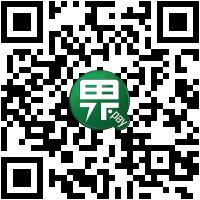Information commons 資訊共享
Information commons 資訊共享
Kranich, N., & Schement, J. R. (2008). Information commons. Annual Review of Information Science and Technology, 42(1), 546–591.
這邊提出來的Information commons跟現今圖書館使用的Information commons差很多喔,在閱讀時不要有先入為主的概念比較好。
Introduction 前言
- “walled garden” or “enclosure” online creates an inequitable and often inaccessible information marketplace.
- many Americans have little access or ability to use the new technologies
- they cannot afford the high prices or comply with the rules created by media corporations
- A commons, simply understood, is a resource, or a facility, "that is shared by a community of producers or consumers."
- The commons elevates individuals to a role above mere consumers in the marketplace.
I. Opportunities and challenges of the information age
i. Evolution of the Information Society 資訊社會的變革
資訊從封存到公開
- 古早圖書館都將館藏封存,直到1450年Gutenberg做到出借與銷售紙本。
- James Madison認為人民政府就是要公開大眾資訊;Benjamin Franklin在1731年建立美國第一座提供借閱服務的圖書館,成為時代先驅。
- 美國憲法訂定著作在一定年份之後就會成為公共領域(public domain)財產。
- 19世紀工業革命建立的電報與電話促進資訊普及。
- 1934年美國the Federal Communications Commission (the FCC)成立,促進資訊可用,特別是在廣播與電視等大眾傳播媒體。
資訊從公用到民間競爭
- 20世紀中期1960年代,從Lockheed建立的Dialog系統開始,新興資訊工業開始反對政府獨霸公共資訊傳播。
- Reagan Administration提出以”maximum feasible reliance(最大可能依賴)”的私有區塊來取代政府的公用資訊。Information Industry Association提倡私有平台,並興起許多資訊所有權與控制權的戰爭。
- 1980年代,新科技跟資訊市場成為國家主要政策項目。1984年American Telephone & Telegraph Company成立,促進Regional Bell Operating Companies擴大到資訊服務與纜線電視。
- 這時期興起了一場新的電信市場競爭:包含當地與遠距電話、纜線電視、電腦公司,直到1990年代”dot.com”出現。同時,媒體企業整併(media consolidation)盛行。
資訊競爭到電信巨人的集中控制
- 1996年美國國會修法開放電信公司的限制,造成少數電信巨人公司控制了資訊資源。Ben Bagdikian的”The Media Monopoly”批評這種現象。
- 2003年FCC決定處理媒體企業整併的問題,想要降低媒體擁有者的數量,卻導致市場變化下降以及資訊更為集中控制。
- Harvard's Kennedy School of Government認為網際網路的網站入口與搜尋引擎可以對抗媒體企業整併的控制。
ii. The Promise of the Internet and the Challenge of Information Access 網際網路的未來與資訊取用的挑戰
網際網路對資訊傳播帶來的變化
- David Bollier: "The Internet facilitated not only expression 'as diverse as human thought,' but 'peer production' – that is, decentralized production and distribution of information that bypasses the centralized control of more traditional publishing.”
Digital Rights Management (DRM) 數位權利管理技術
在著作權法底下,以數位技術控制合理的使用:
- "Fair use," 合理使用: 允許作者、學生、記者與其他人基於評論、改編、學術與創新報告等目的下引用與複製。
- The “first sale” rule 首次付費規則: 允許購買者在購買之後能夠任意出借、給予、分享他人
- The public domain 公用領域: 所有著作都有一定限度的保護期限,之後就成為可供任何人取用的公用財產
媒體公司擴大著作權
媒體公司(如1998年的Digital Millennium Copyright Act, DMCA)利用DRM、加密、浮水印來控制資訊存取,提出無法改變的同意條款,妨礙合理使用並阻止首次付費規則的分享行為。
- 有人嘗試破解加密以求合理使用,但仍是違法行為
- 1984年,Superme Court(美國最高法院)宣布錄影機是違法技術,造成使用者權益大受衝擊。
- 媒體公司要求國會改寫著作權規則,鞏固自己的權益。
- DMCA要求延長著作權法保護期(CTEA法案),從28年延長著作人終身加上死後70年,但2003年被Superme Court拒絕。

(上圖是由美國1998年著作權延長法案的司法風波而來) - 最後結果讓媒體公司關閉線上檔案分享服務,因為他們覺得分享版權保護的檔案會引發政治跟文化衝突。
A central fact about information: it is neither a pure public good nor a pure private good.
II. The Emerging Information Commons
i. History and Theories of the Commons 共享空間的歷史與理論
共享空間的由來
- “commons”(共享空間):原始的意義是農業用地,讓英國農夫自由耕種與放牧。
- 至今人們依舊保持common property (共享資產),像是森林、草地、漁場,同時也有實施管理以免資源耗盡。
共享空間的爭論
- Garrett Hardin在1968年寫了一篇著名的文章 ”The Tragedy of the Commons” (共享空間的悲劇) 警告人們無限制地使用資源,將會造成過度開發。
- Carol Rose提出”comedy of the commons” (共享空間的喜劇),指越多人加入就會讓大家越開心的有限社群,例如祭典或舞廳。
- Since Hardin與其他學者如Siegfried Ciriacy-Wantrup與Richard Bishop分辨兩種共享空間:
- Open-access (or “no property”) regimes 開放近用制度: 任何人都能使用資源,將造成過度使用的悲劇。
- Common property regimes 共享資產制度,或稱為”common-pool resources” (共享資源): 僅允許有限的成員能合法使用資源,比較接近共享資源的喜劇。
共享空間的運作方式
Elinor Ostrom (1933-) 2009年諾貝爾經濟獎得主
- 許多社會學家與法律學家檢視共享資產如何運作。研究領導者Elinor Ostrom分析共享空間的資源特性,認為共享資產制度比較適合由團體去決定,而非由個人控制。
- Ostrom在1980年代中期提出管理共享資源所需要的元件,特別是在開發中國家的自然資源。並協助創建International Association for the Study of Common Property (IASCP),1995年舉辦”Reinventing the Commons”研討會,特別關注自然資源與網際網路議題。
- Ostrom的精華著作”Governing the Commons”描繪了取用共享資源的框架,用八個原則來確保人們能夠長期使用資源。這框架包括了self-governance(自我管理)、清楚定義範圍與規則、互惠主義、建立信任觀念與社會領袖、以及通訊管道。
ii. Applying the Idea of the Commons to Information
- 法律學者認為共享空間的概念可以用來理解資訊的性質,以此對抗著作權限制與DRM技術。
- 該領域的領導者David Bollier與同事Tim Watts認為共享空間的分析可以補足我們之前未曾注意的議題,包括民主參與、開放性、社會平等與多樣性。
- Yochai Benkler認為共享空間可以促進參與:
“An open, free, flat, peer-to-peer network best serves the ability of anyone – individual, small group, or large group – to come together to build our information environment. It is through such open and equal participation that we will best secure both robust democratic discourse and individual expressive freedom.”
開放、免費、扁平的網路提供給每個人(個人、小團體、大團體)最佳的服務,讓大家能聚在一起建立資訊環境。共享空間作為一個開放且平等的參與方式,我們將能確保強健的民主討論與個人表達自由。 - 圖書館專家Karen Fisher與Joan Durrance將理論應用到實作上,他們敘述網際網路為主的資訊社會具備的五個特色:
- information-sharing with multiplier effects; 伴隨多重影響的資訊分享
- collaboration; 合作
- interaction based on needs of participants; 基於參與者需求的互動
- low barriers to entry; and 低取用限制
- connectedness with the larger community. 連接更大的社群
- 公益組織也開始提倡促進資訊共享。David Bollier指導New America Foundation發起Information Commons Project。
- 2001秋天,American Library Association主辦Information Commons的研討會,探討資訊平等、著作權、合理使用與公開取用。
- 2002與2003年,Boston Review, Knowledge Quest與Common Property Resource Digest期刊整本都在討論資訊共享的議題。
- 公益團體如Electronic Frontier Foundation、the Center for Digital Democracy、the Center for Democracy and Technology、Public Knowledge與IP Justice推動更多平衡資訊的政策,促進科學研究成果、公眾領域資訊能夠被更多人取用,並擴大資訊消費者的權利。
- 為了補足Public Knowledge發起的努力,Creative Commons與Center of the Public Domain致力建構新型態的公共領域資產價值。
iii. Examples of Open Democratic Information Resources
Software Commons:
- 電腦軟體開發者早就發展出類似公共領域的架構:open source software application 開放原始碼軟體應用,其中最著名的就是Linux作業系統。
Licensing Commons:
- 1980年代Richard Stallman發展的GUN General Public License (GPL),允許智慧財可供所有使用者取用,包括複製、分享與修改,促進網路開發社群合作發展。
- Creative Commons提供了一套有彈性的著作權授權條款供公眾使用,有些權利可以保留,像是商業使用、保留作者姓名等。
Scholarly Communication: Open Access
- 1980年代,許多專業社群將期刊轉型為私人公司,藉由收費建立營收。水漲船高的經費需求帶給圖書館巨大的壓力。
- ALA結合多所圖書館討論解決方法。Association of College and Research Libraries在2003提出宣言Principles and Strategies for the Reform of Scholarly Communication.
- 歐洲與美國學術社群建立許多學術聯盟。Scholarly Publishing and Academic Resources Coalition (SPARC)是1998年建立的最有名的聯盟,創造了學術社群分享研究結果的新典範:以數位方式提供免費線上取用。
- 另一個重要的行動是open access publishing (開放近用出版期刊),它允許學術資訊供人免費取用。對學者來說,免費取用的線上開放近用期刊可以大量增加文章的引用與影響力。
- 2002年Soros Foundation’s Open Society Institute發展Budapest Open Access Initiative以指導開放近用學術領域的軟體、技術標準與開發。
- 開放近用的經費來源通常是來自於母機構與作者(或著是說,作者的研究機構)。2003年牛津大學發表”open access experiment”實驗,資料庫中的開放近用期刊有90%作者同意支付£300出版費用。
- Public Knowledge Project在2003發表Open Journal Systems原型──期刊管理與發表的開放原始碼軟體。
Scholarly Communication: Digital Repositories
- 1999年Open Archives Initiative (OAI)成立,旨在發展各種學術文獻傳播工具。
- 機構典藏:2002年,許多機構開始使用OAI的工具發展digital repositories(數位典藏)。
- 2002年Research Libraries Group and OCLC, Inc.出版Trusted Digital Repositories: Attributes and Responsibilities,描述數位典藏的在大規模、異質性館藏的特性與責任。
- 2002年MIT開發著名的DSpace,用來典藏MIT教職員的學術成果。
- 學科典藏:學科領域也建立了豐富的典藏內容。起始者是1991年的Los Alamos ArXiv.org,目的是低成本取用進入同儕評閱前的學術研究。
- 自我典藏:個人作者也用他們個人的網站來建立self-archiving(自我典藏)。藉由要求出版期刊保留作者個人的副本,學者也成為一個資訊社群機構,增加取用途徑並讓所有人都能受惠。
- 英國Stevan Harnad與其他研究者發現55%的期刊允許作者自我典藏。
Institutional Commons
- NYU的校長John Sexton認識到將機構轉變成為資訊共享模式的重要性。
- MIT發起大學層級的機構典藏OpenCourseWare,提供大量課程教材供人免費取用。K-12 public schools也提供類似的共享資源給年輕人。
- 圖書館在機構資訊共享扮演領導角色,負責將具有DRM、著作權與其他限制的資訊轉換、調整。
- 學術與研究圖書館也致力於學術通訊上。美國Distributed Open Digital Library (DODL)從各個研究機構中彙整進入公用領域的人類資產與社會科學研究。
- 除了擴增館藏之外,Indiana University、the University of Arizona等學術圖書館也開始建立實體共享空間,以整合性的數位環境為中心重新規劃工作區與服務傳遞方式,把空間調整為核心校區單位,例如圖書館、大學教學中心與電腦中心。
- Newton Minow與Lawrence Grossman合作的Digital Promise Project創建Digital Opportunity Investment Trust (“DO IT”)致力於網際網路與其他新的資訊技術,確保知識可讓眾人取用與終身學習。
Subject Matter Information Commons
- 結合多種共享空間的特性:從市民參與到文化交換,從合作發表到傳播特殊資源。
- 先驅計畫:2004年的BBC Creative Archive與Galiwinku Knowledge Centre。
IV. Principles and Characteristics of Information Commons 資訊共享的特性與原則
特性
- They are collaborative. 合作的
- They offer shared spaces, real and virtual, where communities with common interests and concerns gather. 提供真實與虛擬的空間以聚集社群
- They take advantage of the networked environment to build information communities, and they benefit from network externalities, meaning the greater the participation, the more valuable the resource. 以網路的優勢建立資訊社群
- They are interactive, encouraging discourse and exchange among their members. Many are free or low cost. 可以免費或低成本地跟其他人的互動討論
- Their participants often contribute new creations after they gain and benefit from access. 成員在取用獲益之後會持續貢獻創新資源
原則
- 1993年Aspen Institute發表”first principles”陳述交流、私有與資訊政策
- Aspen的Communication and Society Program發表Toward An Information Bill of Rights and Responsibilities,至今仍是其他原則與宣言的草稿參考。
- 這些宣言中最常見的要素是1.表達的自由與 2. 資訊取用的權利
- 科技與網路組織最強調的是技術議題與交流的權利,例如Association for Progressive Communications的”Internet Rights Charter”
- 有些團體強調政治參與,例如Greater Democracy 與the Center for Digital Democracy。
- 圖書館員與出版者則注重表達的自由、開放近用與affordability (支付能力)。例如ALA的2001圓桌會議發表的”The Information Commons, New Technology and the Future of Libraries”建立了發展資訊共享的12項原則與討論重點。
Finally, says the ALA:
Among the other institutions we might see as part of the commons are: museums, archives, and other resource centers; cultural heritage centers; religious organizations; nonprofit and social service organizations; unions; public interest broadcasters; even commercial organizations may play a role in the information commons to the extent that they benefit from and promote access to information outside strict market limits.
III. The Future of the Information Commons
- 比起加強個人自由,未來共享空間更應該規劃管理制度,並輔以可信賴的數位資源管理技術方案。而發展穩定且有制度的資訊共享需要更多投資與經費。
- 資訊取用的未來不僅是考量可用性與可負擔性,也要考量是否符合居民的資訊需求。
- Boyle提倡”Information as an Ecosystem”,並建議建立有良好組織、經費與基層行動的聯盟以對抗大型產業團體。
- 公益團體應該加入倡導資訊取用的重要性,刺激基金會跟其他贊助單位重視。共享空間的概念只有在經濟支援與政治意志都具備的情況下才能成實現。
- 最後,很重要的是,資訊共享並不是反對營利媒體產業。Frederick Emrich指出應該找尋資訊共享與資訊貿易都能同時互惠的方向。
Policy Recommendations and Strategies
- 創造動機 Create a movement similar to environmentalism promoting the information commons:
- Focus on what we are fighting for, not just against.
- Emphasize the public interest in information access.
- Highlight successes; document problems and chilling effects of enclosure; identify examples of harm caused by technological controls and digital rights management.
- Educate concerned individuals and groups, the press, and the public.
- Organize coalitions based on common interests among disparate groups that cut across traditional alliances.
- Encourage the development of robust information communities.
- Seek funding for demonstration projects and ongoing support.
- 應用共享資源模型 Apply common property resource models to the information sphere:
- Spell out common property resource economic models that elevate the value of shared access.
- Involve information communities in the design, creation, governance, and management of information resources.
- 法律支援 Support legislation that encourages information sharing and oppose legislative, regulatory, and judicial actions that undermine opportunities to participate in the information society:
- Promote legislation that ensures public access to public research.
- Oppose new copyright laws and regulations that limit the public’s access rights.
- 軟體開發 Develop, make available, and adopt open source software, content, standards, and best practices:
- Publish in open access publications.
- Sign only those licenses and contracts that enable open access and guarantee user rights such as fair use and “first sale” sharing of copyrighted works.
- Encourage peer production of information.
- 應用開放近用 Apply open access, digital repository, and other practices developed by scholars more widely.
- 保護公共領域 Value the public domain:
- Protect it as a sanctuary against enclosure.
- Develop advocacy programs, governance structures, and new laws that ensure it is well preserved, governed, managed, and valued.
- Resist attempts to apply technological measures that control access to ideas.
感想
- 我個人很喜歡資訊共享的概念,所以讀這篇的時候真的覺得很感動。這篇很多都是大學的時候毛慶禎老師在「開放近用」課程中教過的內容,這堂課影響我很深,所以我也很敬佩那些努力爭取資訊自由的人們。(貼照片以示尊敬)
- 回顧寫作是以歷史故事的方式撰寫。原本很擔心會難以閱讀,但其實意外地容易吸收。大致上每一段的第一句話或是第二句話就是該段的宗旨或大方向,然後段落其他就是舉例與敘事。由於歷史細節太多,所以我也沒有照他的方式一一細講,而只挑一兩個例子敘述。
- 作者從資訊社會的由來、挑戰,切入到共享空間的概念、爭議與運作方法,然後介紹各種資訊共享的事蹟,最後描繪未來發展方法。儘管文章很長,但是結構卻是十分清晰好懂,所以很容易閱讀。
- 這個資訊共享空間跟現在圖書館在探討的學習共享空間有很大的差異,這邊談的是一種想法、概念、運作方式,而實體的學習資訊服務支援只是其中的一小部分。
- 軟體的資訊共享因為我自己很熟,所以就快速略過。我想同學應該比較需要知道學術方面的資訊共享才是。
這篇文章寫得很棒喔,所以note也長了些XD
(more...)






















Comments